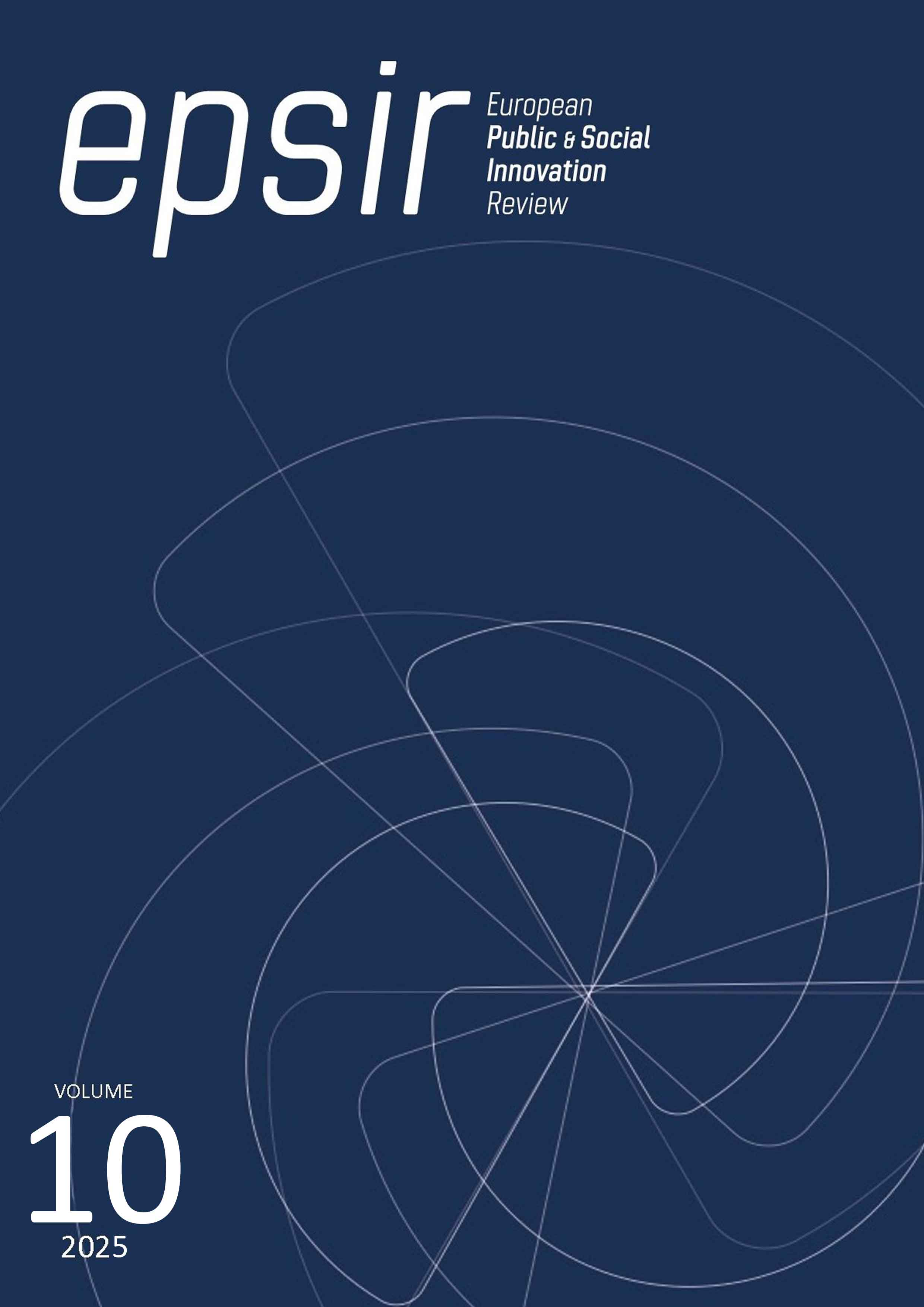Estrategia didáctica para fomentar el placer hacia la escritura literaria creativa en la educación ecuatoriana
DOI:
https://doi.org/10.31637/epsir-2025-2076Palavras-chave:
lectura literaria, escritura creativa, didáctica de la literatura, placer de leer, estrategia didáctica, innovación, estrategias, pensamiento críticoResumo
Introducción: La lectura permite resignificar la realidad y comprender su complejidad mediante la integración de razón, empirismo, imaginación y creatividad, y la literatura, como expresión de este proceso, estimula el pensamiento crítico y proporciona placer intelectual y estético. Metodología: Este estudio etnometodológico, con enfoque descriptivo, se desarrolló con la participación de 315 maestrantes ecuatorianos, y analiza cómo la escritura creativa puede potenciar el disfrute lector en docentes en formación. Resultados: Se propuso una estrategia didáctica que integra el análisis literario con la creación escrita, la cual mostró ser efectiva para transformar la lectura en una experiencia más dinámica y placentera. Discusión: La triangulación entre los resultados, la normativa curricular vigente y la revisión de antecedentes evidenció una brecha investigativa y al mismo tiempo la viabilidad de implementar un modelo didáctico que articule lectura y escritura creativa. Conclusiones: El estudio concluye que integrar la escritura creativa en el proceso lector favorece un equilibrio entre lo cognitivo y lo afectivo, optimiza el placer estético e intelectual, y fortalece el pensamiento crítico y la creatividad en el aula.
Downloads
Referências
Álvarez, M. (2009). Escritura creativa: Aplicación de las técnicas de Gianni Rodari. Educere, 13(44), 83-87. https://ve.scielo.org/scielo.php?script=sci_arttext&pid=S1316-49102009000100010
Arbona, G. (2020). La escritura creativa como disciplina emergente. Arbor. Ciencia Pensamiento y Cultura, 196(798), a576. https://n9.cl/h6jt6j
Arroyo-Mantilla, M. y Carrión-Mieles, J. (2021). Estrategias de lectoescritura para el desarrollo de la escritura creativa. Polo del Conocimiento, 6(12), 468-483. https://doi.org/10.23857/pc.v6i12.3378
Ayala, Y. y Cotrina, P. (2019). Escritura creativa en la escuela. Infancias imágenes, 18(1), 80-94. https://dialnet.unirioja.es/servlet/articulo?codigo=6992022
Calle, G y Aguilera, Y. (2022). La escritura creativa desde un periódico escolar digital en la escuela rural. Cuadernos de Lingüística Hispánica, (40), 1-24 https://doi.org/10.19053/0121053X.n40.2022.14250 DOI: https://doi.org/10.19053/0121053X.n40.2023.14205
Cassany, D. (1999). Construir la escritura: Didáctica de la composición escrita. Editorial Paidós.
Corbalán, F., Martínez, F., Donólo, D., Tejerina, M. y Liminana, R. (2003). CREA: inteligencia creativa, una medida cognitiva de la creatividad. TEA Ediciones.
Guerrero, R. y López, V. (2015). El taller de la escritura creativa. El Guiniguada, 3(2), 403-410. https://accedacris.ulpgc.es/bitstream/10553/5202/1/0235347_01992_0083.pdf
Guzmán, B. y Bermúdez, J. (2019). Escritura creativa en la escuela. Infancias imágenes, 18(1), 80-94. https://doi.org/10.14483/16579089.12263 DOI: https://doi.org/10.14483/16579089.12263
Linden, D. (2011). La brújula del placer. Por qué los alimentos grasos, el orgasmo, el ejercicio, la marihuana, la generosidad, el alcohol, aprender y los juegos de azar nos sientan tan bien. (Trad. G. Sánchez Barberán). Paidós Transiciones.
Martin de Blassi, F. (2018). San Agustín y los sentidos espirituales: el caso de la visión interior. Teología y Vida, 59(1), 9-32. https://dx.doi.org/10.4067/s0049-34492018000100009 DOI: https://doi.org/10.4067/s0049-34492018000100009
Ministerio de Educación del Ecuador (2017). Currículo de EGB y BGU: Lengua y literatura. Quito, Ecuador: Ministerio de Educación del Ecuador. https://goo.su/2ZvfHNv
Monreal, C. (2000). Qué es la creatividad. Editorial Biblioteca Nueva.
Montilla-Narváez, R. (2021). Didáctica de la escritura creativa. Ingeniería, Investigación y Desarrollo, 20(2), 76-92. https://doi.org/10.19053/1900771X.v20.n2.2020.13390 DOI: https://doi.org/10.19053/1900771X.v20.n2.2020.13390
Schmidt-Osmanczik, U. (2017). Placeres verdaderos y falsos en el filebo de Platón. Nova Tellus, 34(2), 135-42. https://doi.org/10.19130/iifl.nt.2016.34.2.744
Paladines, L. y Galeano, Á. (2022). La enseñanza de la Lengua y la Literatura en tiempos de pandemia en la Región Sur de Ecuador. Revista de Educación, 25(1), 379-395. http://fh.mdp.edu.ar/revistas/index.php/r_educ/article/view/5863
Robledo, B. (2021). El campo de la literatura infantil colombiana (2011-2020): un juego de relaciones. Boletín Cultural y Bibliográfico, 35(101), 5-18. https://goo.su/PqU58
Saavedra, A. (2017). La escritura literaria: Una aproximación teórica y práctica. Editorial Alfa.
Sánchez, C. (2021). Prácticas de lectura en el aula. Ministerio de Educación Nacional.
Sierra Sánchez, J. y Sotelo González, J. (2010). Métodos de innovación docente aplicados a los estudios de Ciencias de la Comunicación. Fragua.
Schavino, N. y Villegas, C. (2010). De la teoría a la praxis en el enfoque integrador transcomplejo. https://acortar.link/4KuSFw
Schmidt, O. (2017). Placeres verdaderos y falsos en el Filebo de Platón. Nova Tellus, 34(2), 135-42. https://doi.org/10.19130/iifl.nt.2016.34.2.744 DOI: https://doi.org/10.19130/iifl.nt.2016.34.2.744
Trigo, E. y de la Piñera, S. (2000). Manifestaciones de la motricidad. INDE Publicaciones.
Vanderslice, S. (2017). Rethinking Creative Writing. Palgrave Macmillan.
Zayas, M. (2013). Un extranjero en su propia tierra. Aristipo como modelo del ápolis aristotélico. Eidos: Revista de Filosofía de la Universidad del Norte, 18, 124-147. https://www.redalyc.org/pdf/854/85425463005.pdf
Downloads
Publicado
Como Citar
Edição
Secção
Licença
Direitos de Autor (c) 2025 Virginia Sánchez Andrade, Steve Fernando Pedraza Vargas

Este trabalho encontra-se publicado com a Licença Internacional Creative Commons Atribuição-NãoComercial-SemDerivações 4.0.
Authors who publish with this journal agree to the following terms:- Authors retain copyright and grant the journal right of first publication with the work simultaneously licensed under Creative Commons Non Commercial, No Derivatives Attribution 4.0. International (CC BY-NC-ND 4.0.), that allows others to share the work with an acknowledgement of the work's authorship and initial publication in this journal.
- Authors are able to enter into separate, additional contractual arrangements for the non-exclusive distribution of the journal's published version of the work (e.g., post it to an institutional repository or publish it in a book), with an acknowledgement of its initial publication in this journal.
- Authors are permitted and encouraged to post their work online (e.g., in institutional repositories or on their website) prior to and during the submission process, as it can lead to productive exchanges, as well as earlier and greater citation of published work (See The Effect of Open Access).




